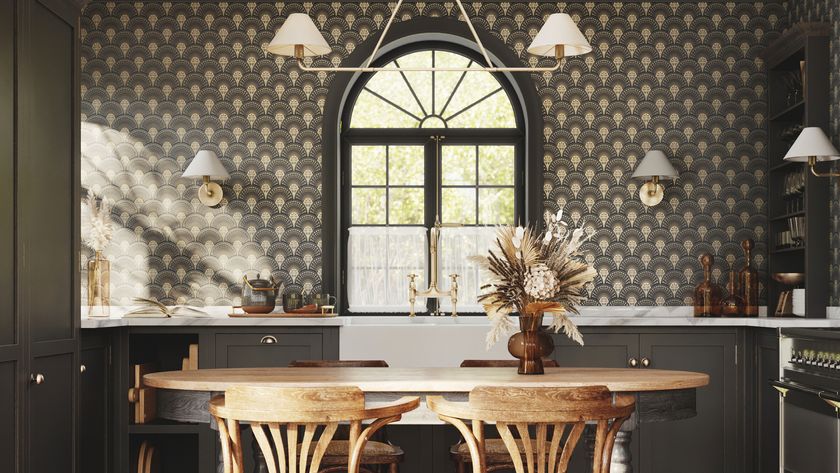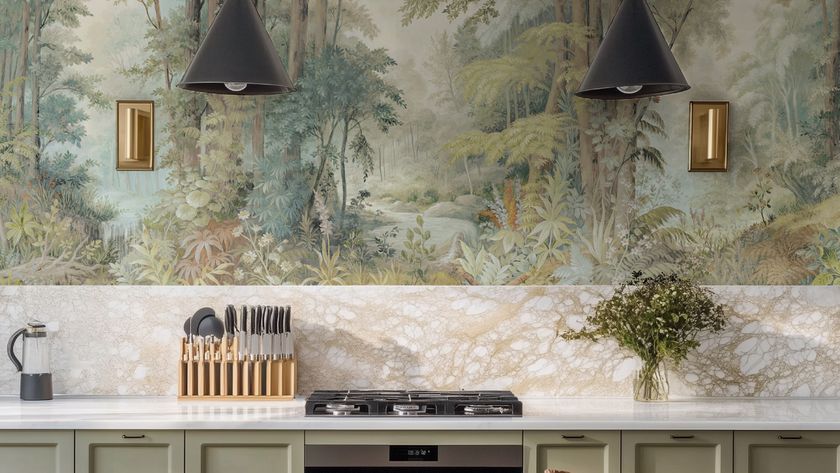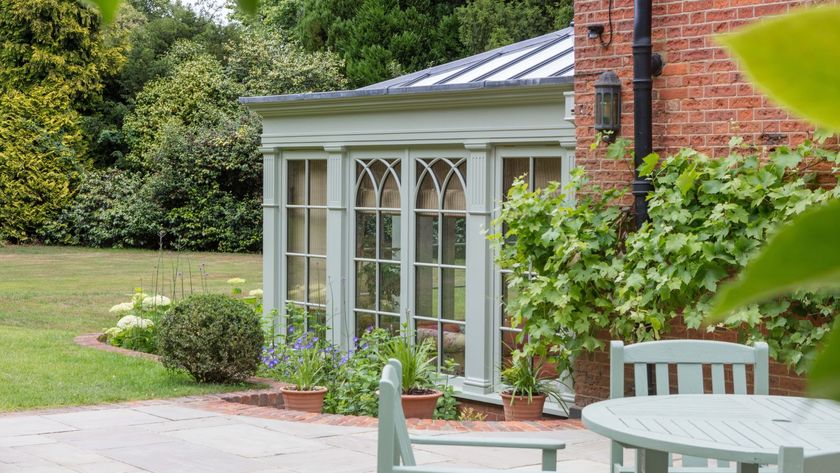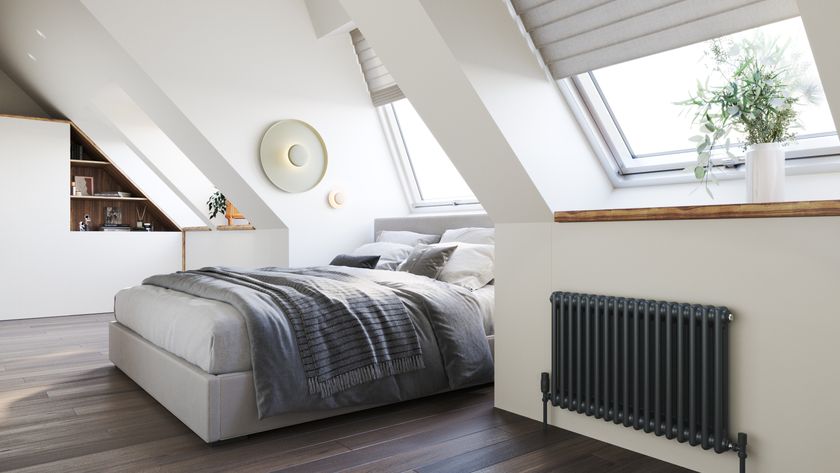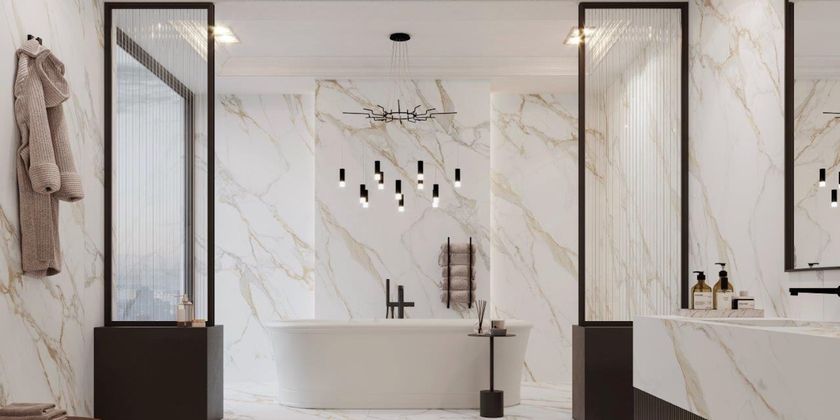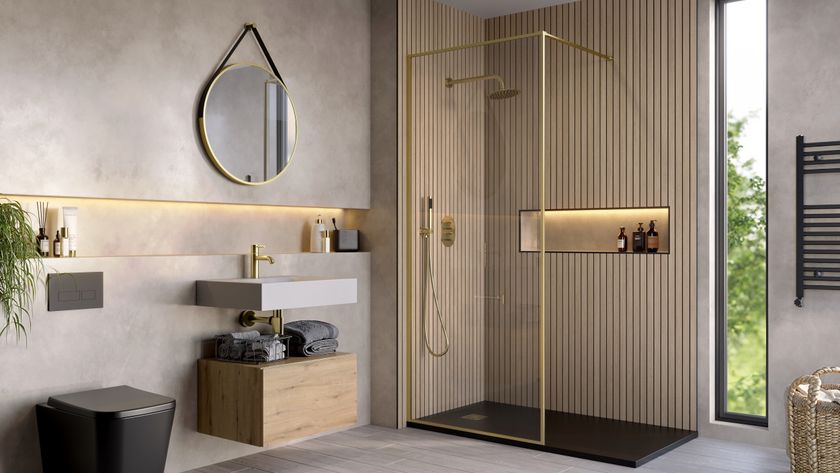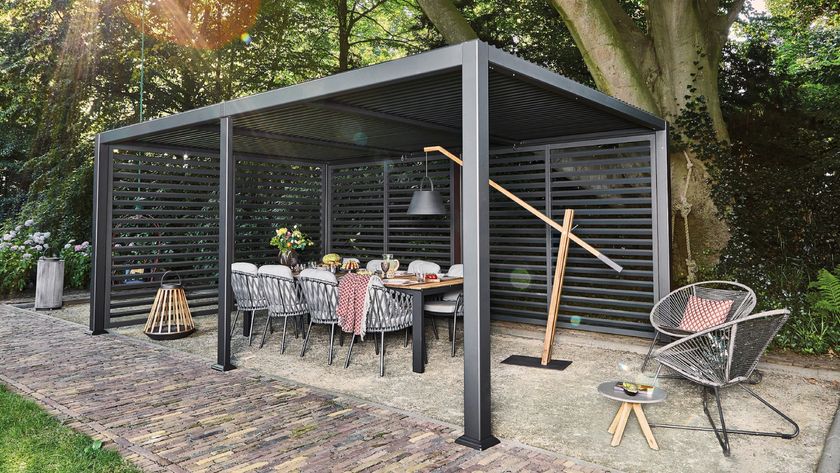Avoid these five living room design mistakes say the experts, or risk having a living room that's simply not liveable
Living room design mistakes can quickly turn cosy and welcoming into cramped and unworkable. We explore the five main mistakes and offer expert advice on how to avoid them
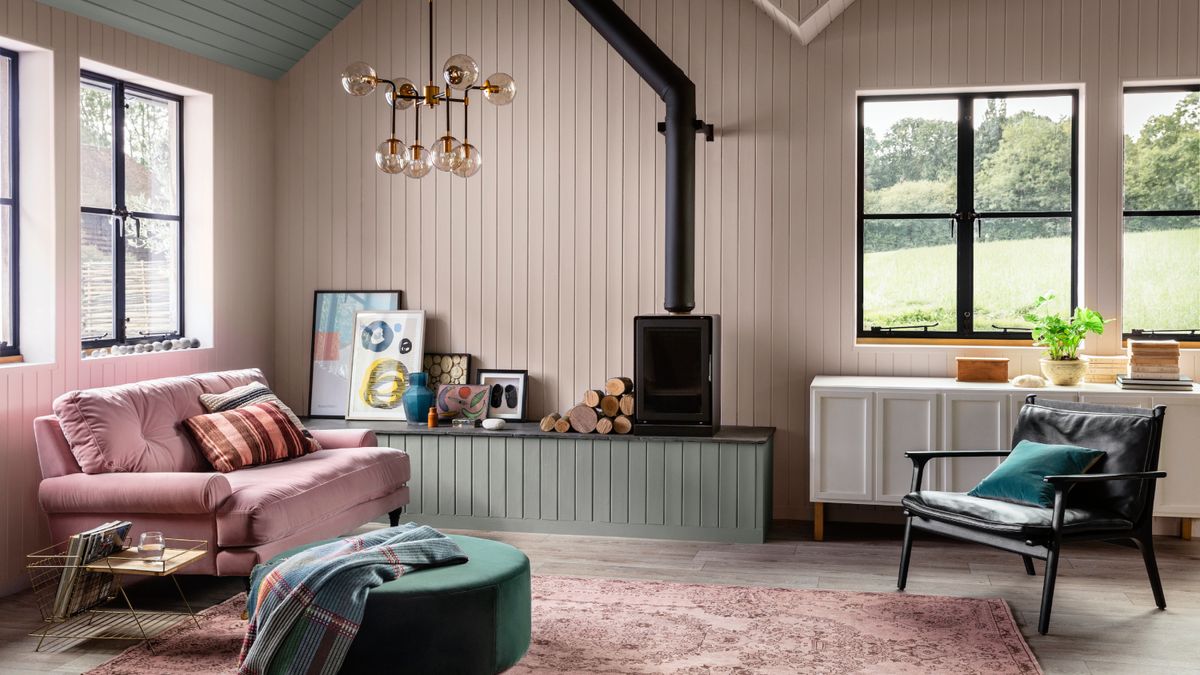
The mark of any good living room design is the creation of a space that feels like it's fit for purpose. Whether you set out to create a warm and cosy reception room or a space that's perfect for entertaining family and friends, if it doesn't match your objectives, it's arguably not a room for living in.
And, while changing wall colours, or tweaking your decor are all easy enough fixes, there are key living room design mistakes to avoid that could cost time and cause stress if you make them in the first place.
We asked interior design experts to share the most common living room design mistakes and how to avoid them, so you don't end up with a redundant room and a wasted budget.
1. Making the wrong flooring choices
Choosing the right living room flooring ideas is pretty important in a space where you'll often be barefoot or certainly shoeless. Or perhaps you entertain a lot, in which case choosing a harder surface such as wooden flooring may offer a more practical solution if you're comfortable with guests leaving their shoes on or lots of food and drink being consumed in the space.
Either way, getting your flooring wrong can be a living room design mistake that costs you both in monetary, and inconvenience terms. To avoid flooring mistakes, Claire Garner, director of Claire Garner Design Studio shares her top tips.
- Rugs are better than carpet: For flooring, I always recommend choosing large rugs over wall-to-wall carpet. A well-chosen rug will anchor the space, define different areas, and make the room feel more cohesive. It adds a layer of warmth and texture and can create the illusion of a larger area by drawing the eye across the floor, adding depth. For a light and airy feel, opting for a lighter colour or a subtle pattern.
- Light flooring = more light: In an already dark room with limited natural daylight, choosing dark flooring will significantly impact the perception of space. Opt for light-coloured wood flooring, and consider a light oil finish on oak or ash, or whitewashed Douglas fir flooring. This will add a subtle tint that reflects more light whilst enhancing the wood’s natural grain.
- Wide or patterned wood flooring will add the sense of space: Don't assume wide planks will make a space seem smaller. It's the opposite. They can create a seamless and expansive look, making the room feel larger and brighter. Additionally, herringbone or chevron patterns with a light finish can introduce a touch of elegance and interest, drawing the eye across the floor and creating the illusion of space.
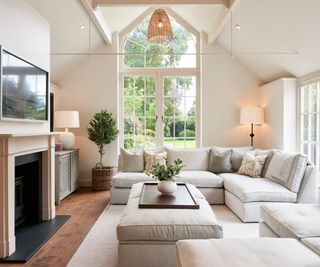
Don't scrimp on your flooring budget
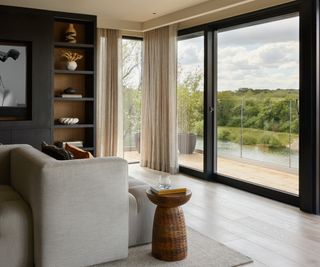
In a room that's likely to be used several times each day, it's also important not to make the mistake of cutting your budget when it comes to the type of wood flooring you choose, says Ian Tomlinson, managing director of Chaunceys Timber Flooring. While it can seem appealing to choose a more budget option, cheaper is also likely to need replacing sooner, costing you more in the long run.
"While budget-friendly flooring might seem appealing, cheaper products are usually produced with shorter board lengths, thinner oak wear layers and lower-quality materials," explains Ian. 'The difference in quality is stark when comparing these products side by side with premium flooring. For those seeking long, wide planks made with thick, sustainably sourced European oak, there will be a higher price point, but the added quality, durability and visual appeal make it a worthwhile investment."
And, what you may spend in terms of cost, you will potentially gain in terms of time, notes Ian. "Engineered wood flooring typically require less time to acclimatise and are more straightforward to fit, which can save both time and costs during installation."
Of course, for some, opting for a softer feeler underfoot is the preferred choice in a living room in which case it's important to choose the best carpet for living rooms that will give you a stylish and practical flooring solution.

Claire Garner has over 15 years’ experience in the interior design industry, and over a decade running her own interior design studio. Her ability to design is well known, as is her skill in creating beautiful designs through layered simplicity; evoking a true sense of depth and calm in her spaces.

Chaunceys Timber Flooring is a family-run company based in Bristol with Ian becoming the Managing Director in 2012. They have been supplying sustainable, high-quality timber flooring to homeowners, award-winning architects, design and build companies, and renowned interior designers since 1988.
2. Lacklustre lighting
"Your living room lighting ideas play a crucial role in setting the mood and functionality of a living room, yet it is often an afterthought in interior design," says James Kendall, operations director at KES Lighting. It's not a case of having one set of lights and that's enough. Lighting plays a key part in creating mood and ambience, as well as providing sufficient practical light that allows you to use the space as designed.
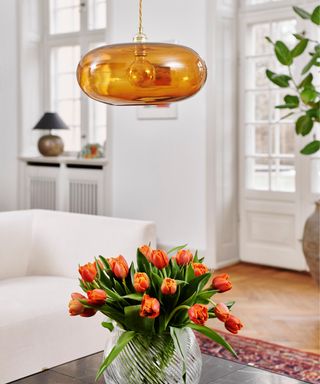
Keen to avoid making the living room design mistake of poor lighting choices? James shares his the most common mistakes and how you can best avoid them.
- Relying on a single overhead light: One of the biggest mistakes is depending solely on a central ceiling light to illuminate the entire space. While overhead lighting is important, it can create harsh shadows and leave certain areas feeling dark or flat. Instead, layer your lighting by incorporating table lamps, floor lamps, wall sconces and accent lighting to create depth and warmth. A mix of light sources allows for better control over brightness and ensures the living room feels inviting at all times of the day
- Not using dimmable lighting: Lighting should be adaptable to different times of the day and various activities, from reading to entertaining. Without dimmable options, you may find yourself stuck with either overly bright or insufficiently lit spaces. Installing dimmer switches gives you greater flexibility to set the mood, whether you want bright light for practical tasks or a softer glow for a cosy evening
- Ignoring task lighting: A well-designed living room should cater to different needs, including reading, working or relaxing. Without task lighting, such as adjustable floor lamps or table lamps next to seating areas, the space can feel impractical and straining on the eyes. Adding task lighting ensures that certain zones are well-lit for specific activities without overwhelming the entire room with unnecessary brightness
- Poor placement of lights: Lighting placement is just as important as the type of lighting you choose. Lights positioned too high or too low can create unflattering shadows or fail to light key areas effectively. For example, wall sconces should be placed at eye level to provide balanced illumination and table lamps should be positioned to reduce glare while reading. Consider how natural light interacts with artificial light sources to achieve a harmonious effect throughout the room
- Overlooking accent lighting: Accent lighting is often forgotten, yet it adds character and highlights key design features in a living room. Without it, architectural details, artwork or shelving can feel flat and overlooked. Incorporating LED strip lighting along bookshelves, recessed spotlights to highlight artwork or directional wall lights can enhance the overall feel of the space
- Choosing the wrong colour temperature: The lighting temperature of your bulbs has a significant impact on the atmosphere of your living room. Cool white lighting (4000K and above) can feel too stark and clinical for a cosy environment, while overly warm tones (below 2700K) may not provide enough clarity for practical use. Opting for bulbs in the warm white range (2700K–3000K) strikes the perfect balance between comfort and functionality
- Ignoring smart lighting options: With advancements in lighting technology, smart lighting solutions offer greater control over brightness, colour and even scheduling. Many homeowners overlook this, missing out on the convenience and energy efficiency that smart bulbs and systems provide. Smart lighting allows you to tailor your living room’s lighting to different settings with ease, whether through voice control or mobile apps

As Operations Director at KES Lighting, James is perfectly placed to offer expert guidance on all aspects of home lighting. From dazzling crystal chandeliers and statement wall lights to designer lamps and elegant drop pendants, James and his knowledgeable team are always on hand to help customers find the perfect lighting for their individual project.
3. Choosing the wrong furniture and layout
In the same way as furniture matters in your bedroom design, the furniture you choose for your living room ideas – whether they fall into the category of rustic, cosy or minimalistic – can make or break your living room experience. And the same goes for your living room layout ideas too. If your sofa is too big or too small, or your coffee table is out of arm's length, the overall feeling you'll have when using your living room is discomfort rather than pleasure.
But don't just take our word for it, the experts agree with us too.
"One of the most common mistakes in designing this space is choosing the wrong sofa," says Emma Deterding, founder and creative director of Kelling Designs and Kelling Home.
"Many assume that a large, chunky corner unit is the best option to provide enough seating for everyone. However, these can take up a lot of space and dominate the room. Instead, consider multiple sofas, such as a combination of a three-seater and a two-seater, which may better suit the space," suggests Emma.
"Opt for designs with slimmer arms to maximise seating without overwhelming the room. This approach not only improves the layout and flow but also ensures there are enough seats while making the room feel more spacious. Aim to seat the optimal number of people by incorporating smart seating solutions like stools, ottomans, and fire fenders. Sofas and armchairs are a long-term investment," she notes, "so choose designs that are both comfortable and timeless – pieces that you love and that can easily move with you should you relocate."
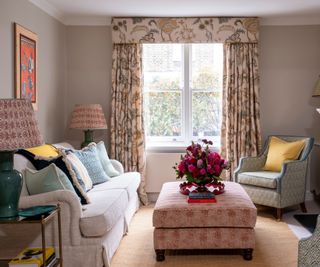
Don't push your furniture against the walls to make the room seem bigger
On the subject of layout, it's also important not to be tricked into the common living room design mistake of assuming you need lots of floor space on display for the room to seem big enough, says Kate Palmer, creative director at The Painted Furniture Company.
"A common living room design mistake is pushing all the furniture up against the walls in an attempt to make the space feel bigger. While it might seem like the logical thing to do, it can actually have the opposite effect," warns Kate, "leaving the room feeling a little empty and disconnected.
"Instead, think about how you use the space day to day. Create cosy zones that encourage conversation and relaxation, perhaps by positioning your seating around a central coffee table or fireplace. Make sure there’s a natural flow through the room, with enough space to move comfortably between furniture pieces.
"Bringing furniture inwards and creating more intimate groupings helps define the space and encourages conversation and connection," advises Kate. "It also gives the room a more considered, welcoming feel. Even just pulling a sofa slightly away from the wall or anchoring the layout with a rug can make a huge difference."

Emma Deterding is a leading interior designer who has been named among the top 100 in the world. With over twenty-five years of experience, Emma has honed her ability to offer well thought-out schemes that turn her clients' homes into beautifully designed and practical places.

Kate Palmer is the creative director at The Painted Furniture Company. With a background in fashion design and passion for colour and interiors, Kate has helped many customers to achieve the exact look they desired for their home.
4. Not including enough storage
If you struggle to think of a room in the house where you don't need storage, you're not alone. Most of us are familiar with the feel of never having enough storage, and it's a common living room design mistake – especially in open plan spaces or living rooms that need to double up as playrooms during the day, and relaxation rooms at night.
However, once you consider seating, coffee tables and TV units, how do you make sure you have enough space left for your living room storage ideas?
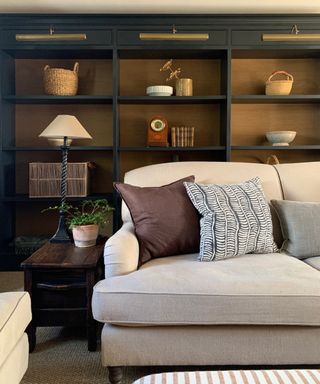
"Clever storage is key when it comes to avoiding this living room design mistake," says Clare Garner. "Keeping potential clutter hidden and displaying styled objects instead can instantly elevate your room. Consider the option of bespoke joinery, which allows you to craft custom-built cupboards and shelves that seamlessly blend into your living space. By incorporating built-in cabinets and shelving units around the television area, for example," she suggests, "you can effectively conceal clutter while also displaying decorative items, maintaining a cohesive design throughout the room."
Opting for bespoke furniture, can also be an additional design trick, says Emma Deterding. "Having items custom made also offers a chance to introduce colour and pattern to your overall scheme," says Emma. "Consider painting the joinery in a striking shade or adding wallpaper to the backs of shelving for an unexpected decorative touch."
Another of Clare Garner's tips is to choose multifunctional furniture such as ottomans with hidden storage or coffee tables with drawers to maximise space and discreetly stow away any clutter.
"Embrace vertical walls too," she suggests, "by installing tall bookcases or wall-mounted shelves to make the most of what is often unused space, all while keeping the floor area uncluttered and open. Also consider integrating stylish storage baskets and bins to organise smaller items in an aesthetically pleasing manner, ensuring they remain easily accessible yet neatly arranged."
5. Neglecting your windows
One final common living room design mistake is overlooking the importance of window dressings. While you may rarely see your bedroom blinds for example (most of the time spent in your room is asleep) and your kitchen window ideas need ultimately to be practical, in a living room, where you may spend equal amounts of time in there during the day and night, what you cover your windows in suddenly becomes more important.
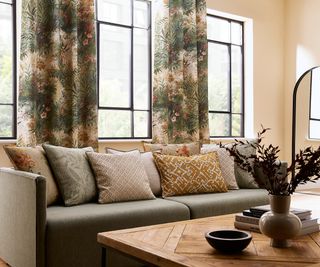
"The right curtains or blinds in a living room can completely transform a space, adding softness, height and a real sense of cohesiveness," confirms Debbie Leigh, design manager at Iliv.
"A frequent error is the way curtains are hung and this can have a surprisingly big impact on the overall look and feel of your room," says Debbie. "For a polished finish, I recommend letting your curtains just kiss the floor as this creates a clean, tailored effect. If you’re after something a little more romantic and traditional, allowing the fabric to gently puddle adds a lovely sense of softness and charm," she suggests.
"One thing to avoid is curtains that fall short of the floor, as they can interrupt the flow of the room and make your ceilings feel lower than they are," warns Debbie. "For an added sense of height and elegance, try placing your curtain poles or tracks higher than the window frame. This simple trick can make the room feel taller, lighter and more spacious.
"It’s also worth thinking about the weight and colour of your fabric," adds Debbie. "Heavy, dark materials can sometimes overpower a light, airy space, while something too sheer may lack the warmth and cosiness you’re after. Well-chosen window dressings can tie a whole room together, they’re the finishing touch that shouldn’t be left as an afterthought."

Debbie has over 30 years of experience in the trade and is considered an expert in creating beautifully coordinated fabric collections that can be easily combined to create harmonious interior schemes.
Emma Deterding's final tips on avoiding living room design mistakes? "The living room should be a space to relax, socialise, and spend time with loved ones, so it's crucial to consider who will be using the space, how it will be used, and what for, as this will have a significant impact on your overall design and help guide decisions on furniture, décor, and layout.
"Ultimately, designing your living room should be about creating a space that reflects your personal style and is filled with things you love. When it comes to choosing the best colour for a living room, bold colours and striking patterns can be just as restful as muted neutrals, so embrace what makes you happy," advises Emma. "When choosing larger furniture pieces or statement elements such as wallpaper, opt for timeless styles and colours that will endure, allowing you to refresh the space with smaller, more affordable accessories over time – after all, a sofa is not something you will want to replace every year!"
Keen to avoid making mistakes on the rest of your self build or renovation? Be sure to avoid these kitchen design mistakes and if you're planning on undertaking a lot of the work yourself, find out what are the top 10 DIY mistakes you need to steer clear of.
Get the Homebuilding & Renovating Newsletter
Bring your dream home to life with expert advice, how to guides and design inspiration. Sign up for our newsletter and get two free tickets to a Homebuilding & Renovating Show near you.

Sarah is Homebuilding & Renovating’s Assistant Editor and joined the team in 2024. An established homes and interiors writer, Sarah has renovated and extended a number of properties, including a listing building and renovation project that featured on Grand Designs. Although she said she would never buy a listed property again, she has recently purchased a Grade II listed apartment. As it had already been professionally renovated, she has instead set her sights on tackling some changes to improve the building’s energy efficiency, as well as adding some personal touches to the interior.
